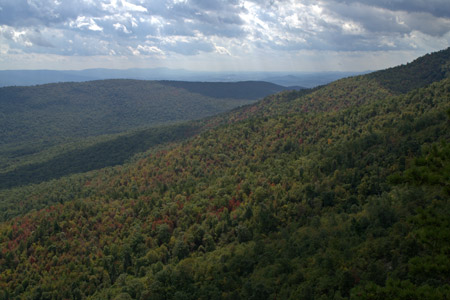By Michelle Werts
As most of our loyal readers know, our mission here at American Forests is to protect and restore forests. Simple, concise, pretty straightforward, right? Most of the time, that’s true, but sometimes those simple, yet deceptively complex, words require some additional explanation. So what do we mean by “protect” exactly? It means this: “Forest protection refers to the active and enduring safeguarding of certain forests that have inherent ecological, societal or cultural importance.”
This definition gives us a solid foundation upon which we can base our work, decisions and positions, and it is this definition that has caused us to become deeply concerned about Virginia’s George Washington National Forest.

Administratively connected with Jefferson National Forest, the two forests contain almost 1.8 million acres of forestland in Virginia, West Virginia and Kentucky. And within George Washington National Forest, you will find the headwaters of major eastern rivers, including the Potomac, which eventually flows into the Chesapeake Bay, and the James River in southern Virginia. More than seven million people live within the watersheds of these two rivers alone — and that water is under threat.
Last year, the U.S. Forest Service proposed a ban against horizontal drilling and hydraulic fracturing — commonly called “fracking” — in George Washington National Forest, deeming that those actions proposed a significant risk to the forest’s health and the health of those that rely on the forest, including the 260,000 local residents whose drinking water is supplied by George Washington National Forest. Now, though, the Forest Service is under pressure from the oil and gas industries to rescind that proposed ban, and this is something that we do not support — going back to that “safeguarding certain forests” phrase.
If drilling and fracturing are allowed in George Washington National Forest, millions of people could be adversely affected if dangerous substances enter the headwaters housed in George Washington. To show the U.S. Forest Service that it has our support, and that of our members, we’ve developed a pre-written letter that is just waiting in our Action Center for electronic signatures from our concerned members.
American Forests has already shown its commitment to the health and vitality of this forest, as a 2013 Global ReLeaf project is planting 5,000 trees across 60 acres of George Washington and Jefferson National Forests to help restore the forest from the damage caused by the gypsy moth. Won’t you add your voice to ours?